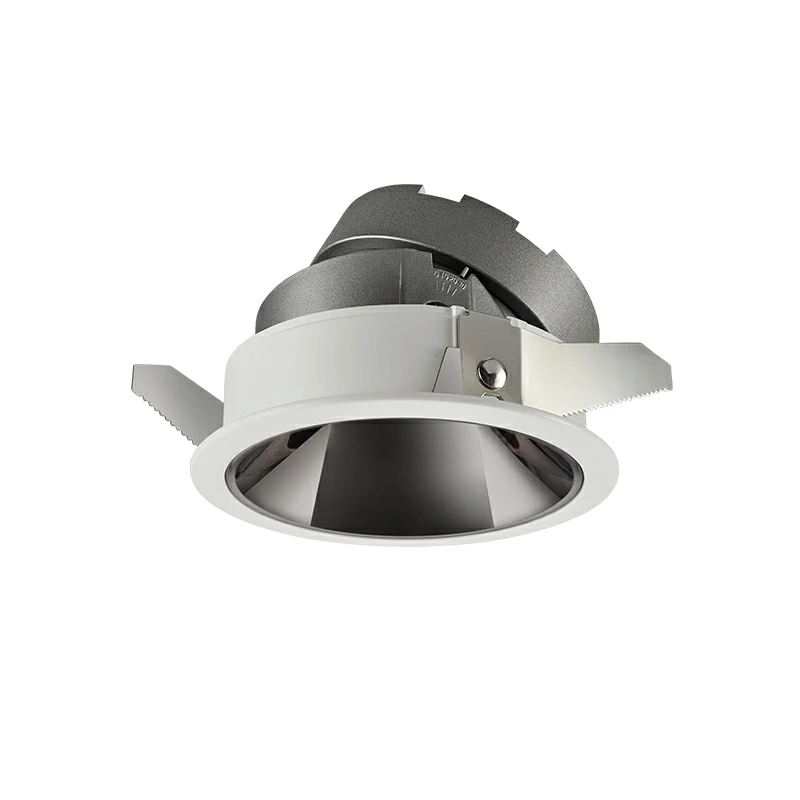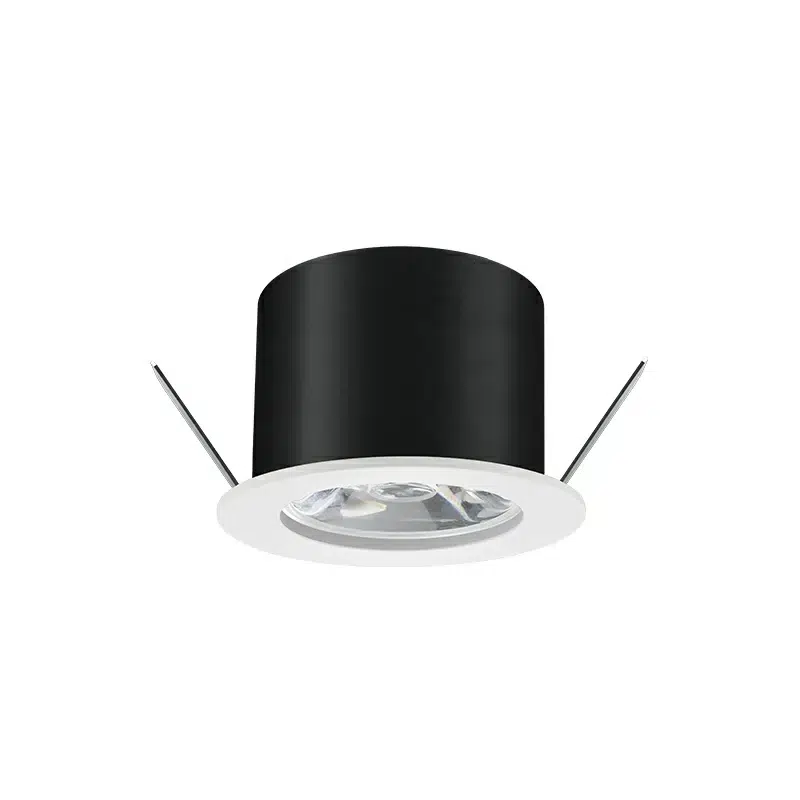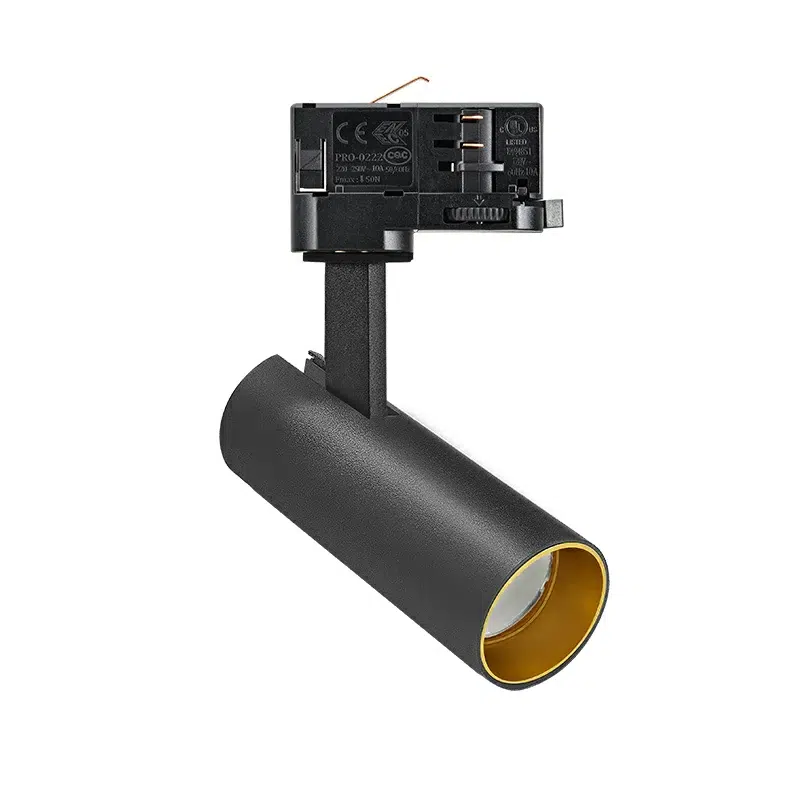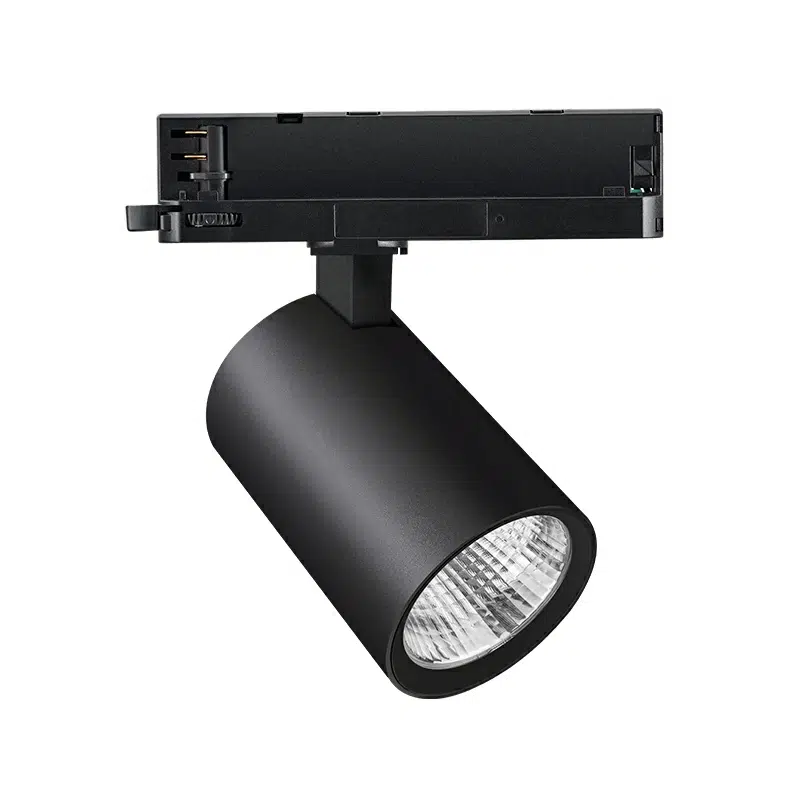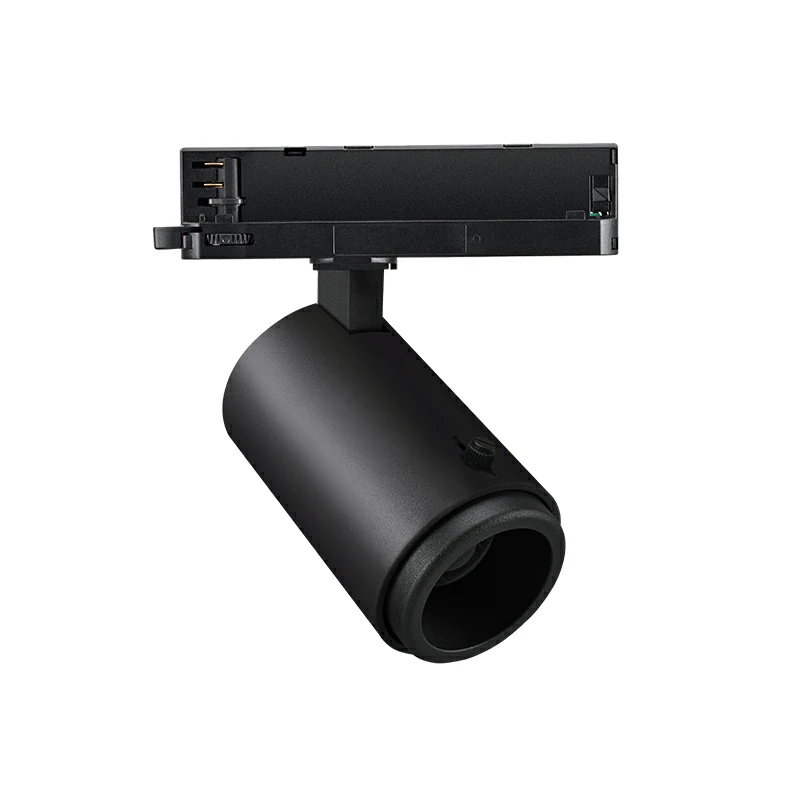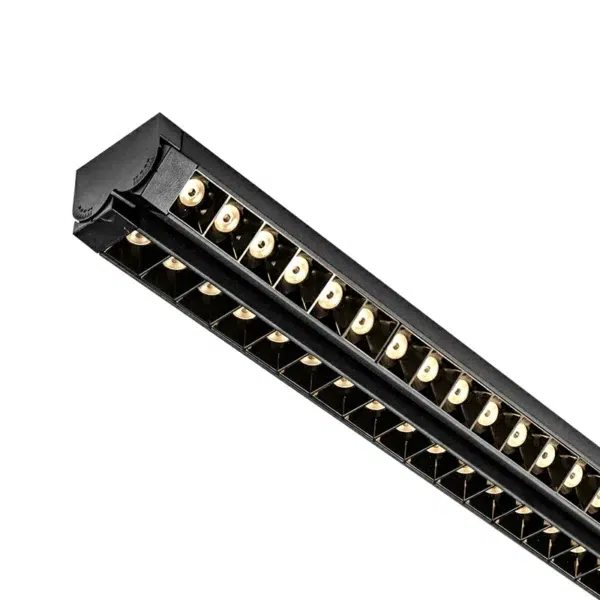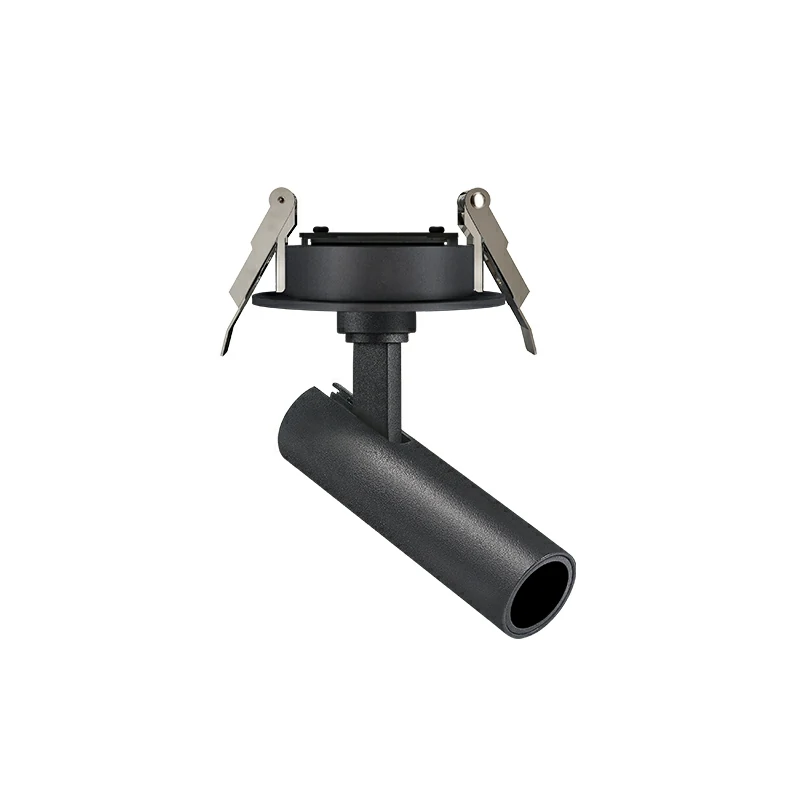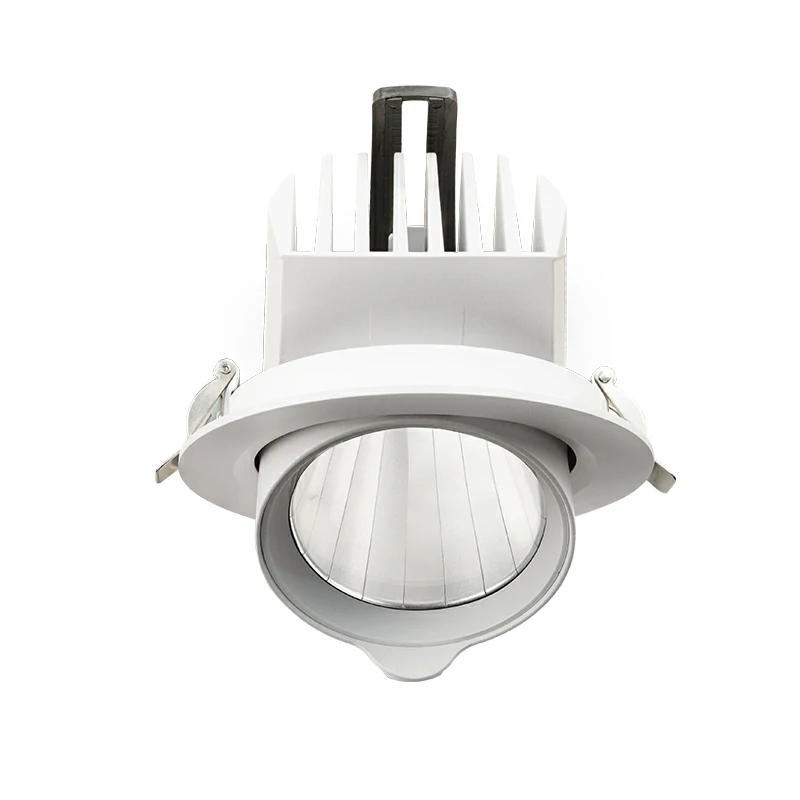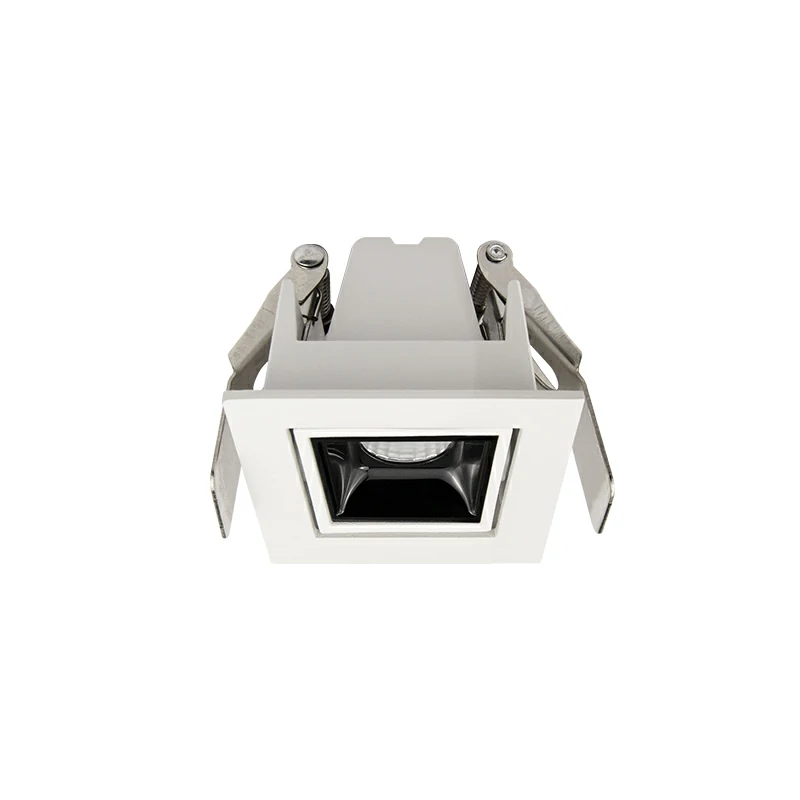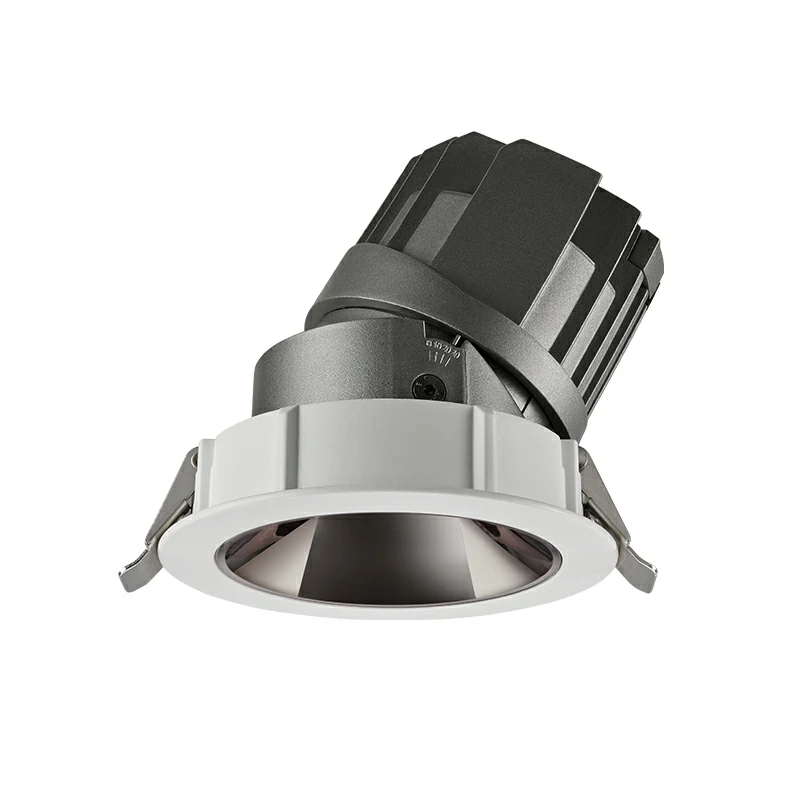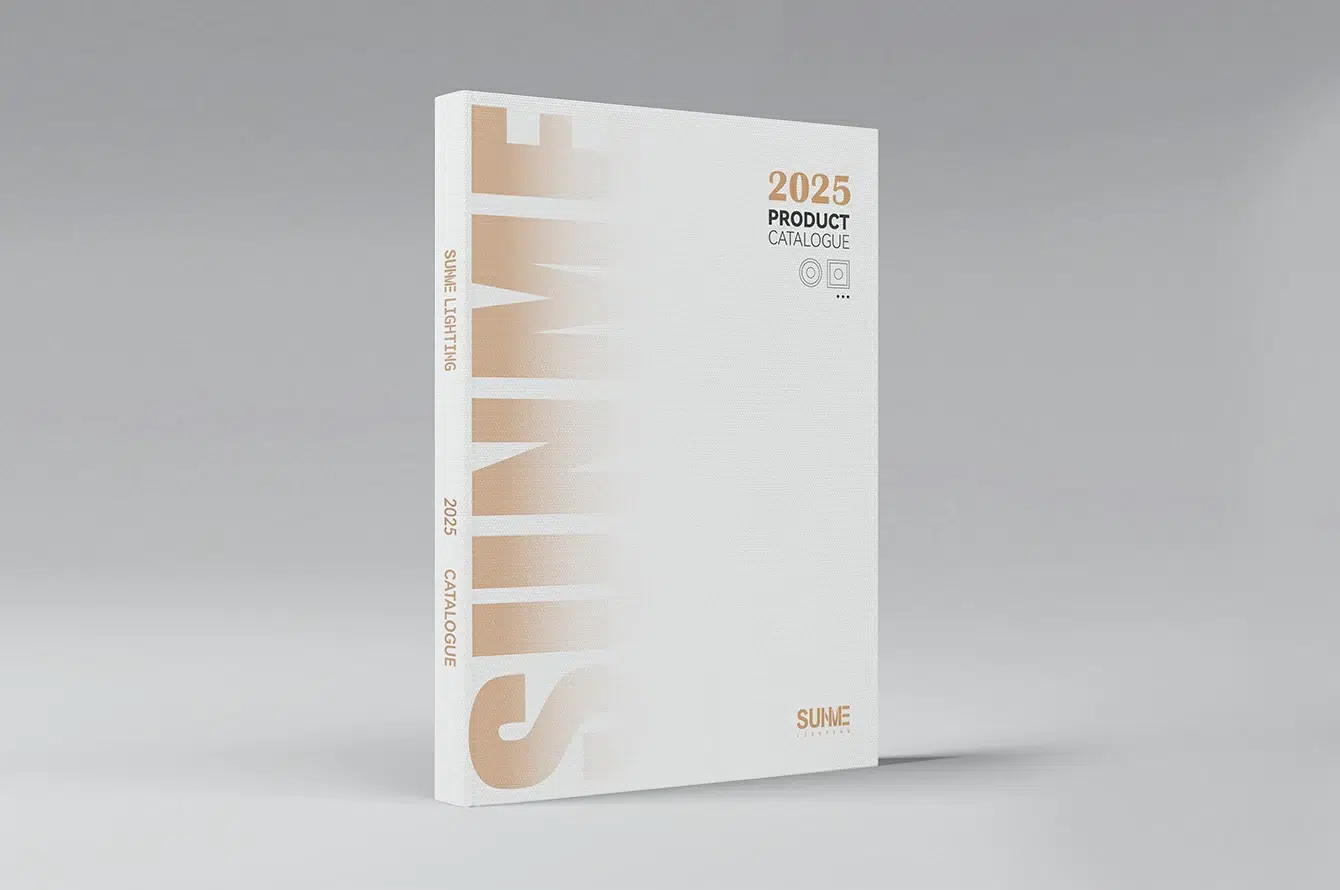LED recessed downlights are a game-changer when it comes to modern home lighting solutions. These sleek, efficient lights not only enhance the aesthetic appeal of any room but also offer significant energy savings compared to traditional lighting options. However, installing LED recessed downlights can be tricky if you’re not familiar with the key considerations that go into their setup. Mistakes made during installation can lead to disappointing results, like poor lighting distribution, high energy consumption, or even the need for costly repairs down the line.
To help you get the most out of your LED inbouwspots and avoid common pitfalls, we’ve compiled a list of the top five mistakes to avoid when installing them. Let’s dive in!
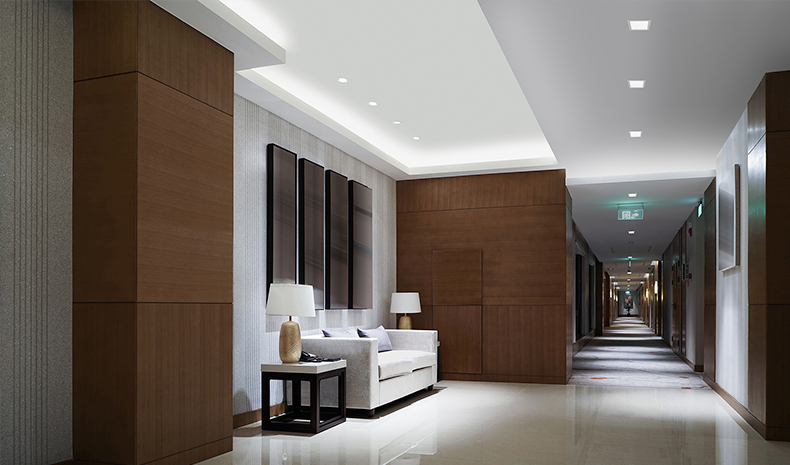
1. Overlooking the Right Trim and Finish for Your LED Recessed Downlights
One of the most overlooked aspects when installing LED inbouwspots is selecting the right trim and finish. The trim not only plays a functional role in directing the light properly but also impacts the overall look and feel of the room. A poor choice in trim can make your downlights look out of place, or worse, reduce their performance.
Why it matters:
LED recessed downlights come with various trim options, each designed for different effects and purposes. The wrong choice could result in light spilling in the wrong direction, creating harsh shadows, or failing to blend with your room’s design. For example, a glossy trim can reflect too much light, making a room feel overly bright, while a matte finish might not reflect enough light, creating a dimmer environment than desired.
What to consider:
When selecting the trim for your LED recessed downlights, think about both the functional and aesthetic qualities you want to achieve. If you’re lighting a living room or dining area, you may want a trim that directs light downwards without creating excessive glare. For bathrooms or kitchens, consider trims that resist moisture buildup.
Also, think about the finish. A brushed nickel or chrome finish works well in modern spaces, while an antique brass trim can complement more rustic or vintage interiors. Keep in mind that some trims allow for a wider beam of light, while others focus the light into a concentrated spot. Your choice should align with the desired atmosphere and function of the room.
How to get it right:
Make sure to take into account the purpose of the space when choosing the trim and finish for your LED recessed downlights. Consult with your lighting supplier to determine which trim type would best suit your needs, and always prioritize both aesthetic harmony and functionality. Don’t forget that trim selection can also affect the ease of maintenance, so choose a style that allows for easy cleaning without compromising the appearance.
2. Installing LED Recessed Downlights Without Considering Ceiling Height
Another common mistake during the installation of LED recessed downlights is neglecting the height of the ceiling. Ceiling height is crucial because it affects the intensity and distribution of light in a room. When installed improperly, downlights may not provide adequate illumination or create uneven lighting patterns.
Why it matters:
The height of the ceiling influences how far light travels and how concentrated the light beam is. For example, in rooms with low ceilings, LED recessed downlights that are spaced too far apart can cause areas of the room to be inadequately lit, while lights placed too closely together can result in excessive brightness in one area, leading to an uncomfortable environment. In contrast, higher ceilings often require lights that offer a wider beam spread to ensure uniform lighting across the space.
What to consider:
When planning the placement of your LED recessed downlights, take into account the size and height of the room. If you have a lower ceiling (8 feet or less), aim to space your lights closer together to ensure you get even light distribution. For higher ceilings (9 feet or more), you’ll want to increase the spacing and opt for downlights that cast a wider beam to cover the larger area effectively.
How to get it right:
Before installation, measure the ceiling height and decide on the beam angle of the LED recessed downlights. For standard ceiling heights (8-9 feet), a narrow beam angle (around 30-40 degrees) may work best, while higher ceilings may benefit from downlights with a wider beam angle (50 degrees or more). Be sure to consult with a lighting expert or use online tools that help calculate the optimal spacing and stralingshoek for your specific room.
3. Failing to Account for Lighting Angles with LED Recessed Downlights
Lighting angle plays a significant role in how effectively your LED recessed downlights illuminate a space. Failing to account for lighting angles during installation can result in unwanted shadows or a spotlight effect, which detracts from the desired ambiance.
Why it matters:
LED recessed downlights can be equipped with various beam angles, ranging from narrow to wide. A narrow beam focuses light in one specific area, which is perfect for highlighting artwork, architectural features, or creating dramatic effects. On the other hand, a wide beam distributes light more evenly across a larger area, which is ideal for general room illumination.
What to consider:
If you’re lighting a kitchen, hallway, or dining room, consider using LED recessed downlights with a wider beam angle (around 40-60 degrees) to ensure that the entire space is well-lit. For areas where you want to focus attention—like an accent wall, countertop, or specific decor—use downlights with a narrower beam angle (20-30 degrees).
How to get it right:
Evaluate your space and the specific areas you want to highlight. For general room lighting, use downlights with a medium to wide beam angle and ensure they are spaced evenly across the ceiling. For accent lighting, consider using adjustable downlights or focusing the light towards specific objects or areas for the best effect.
4. Neglecting the Correct Power Supply for LED Recessed Downlights
When installing LED recessed downlights, it’s crucial to ensure the power supply is compatible with the lights you’re using. Neglecting this detail can lead to problems such as flickering lights, insufficient brightness, or even damage to the downlights themselves.
Why it matters:
LED recessed downlights typically require a constant and stable power supply. If the voltage is too high or too low, it can affect the performance and longevity of the lights. Additionally, using an incompatible dimmer switch with LED-lampen can result in uneven dimming or flickering.
What to consider:
Check the wattage requirements and the voltage rating of the LED recessed downlights before installation. Ensure that the power supply can handle the load of all the lights installed in the room. If you’re using dimmable LED recessed downlights, make sure the dimmer switch is compatible with LED technology to avoid flickering or erratic behavior.
How to get it right:
Always verify the power specifications for the LED recessed downlights you plan to install, and choose a compatible power supply and dimmer switch. If you’re unsure, consult with an electrician to ensure the installation is safe and up to code. A proper power supply will not only maximize the lifespan of your LED recessed downlights but also provide consistent and reliable lighting throughout your home.
5. Using Low-Quality LED Recessed Downlights That Don’t Last
It’s tempting to choose cheaper options when installing LED recessed downlights, but using low-quality products can lead to frequent replacements, poor lighting performance, and a higher long-term cost.
Why it matters:
Low-quality LED recessed downlights are often made with subpar materials that can degrade quickly. They may have lower energy efficiency, poor heat dissipation, or inadequate light distribution. Over time, these factors can result in lights that burn out faster, leading to frustration and unnecessary replacement costs.
What to consider:
Investing in high-quality LED recessed downlights from reputable manufacturers ensures you get lights that are built to last, perform well, and offer consistent lighting for years to come. Look for lights that are ENERGY STAR certified and offer warranty protection. Quality downlights will not only save you money on energy bills but will also require fewer repairs and replacements.
How to get it right:
Always prioritize quality when purchasing LED recessed downlights. Research manufacturers and read reviews from other users to find the most reliable products. Look for lights with a proven track record, such as long warranties, and make sure they’re energy-efficient to help you save in the long run.
Conclusie
Installing LED recessed downlights can transform your home with efficient, stylish lighting, but it’s essential to avoid common mistakes that can hinder their effectiveness. By carefully considering the trim, ceiling height, lighting angles, power supply, and quality of the downlights, you can ensure a successful installation that enhances both the functionality and aesthetics of your space. Follow these guidelines, and you’ll enjoy the benefits of beautifully illuminated rooms with LED recessed downlights for years to come.
Heb je geen zakelijk e-mailadres? Klik hier!
Wees je bewust van alle gebeurtenissen
Wat is flikkeren? Belangrijkste oorzaken en oplossingen voor knipperende LED's?
Commerciële verlichtingsarmaturen op maat: OEM en huismerk LED-oplossingen
Verlichtingsproducten
Koffer 115 Alanod Reflector / In & Uit
| Model |
SC6082115R-AR |
|---|---|
| Stroom |
35W |
| Stralingshoek |
15°/24°/36°/60° |
| Uitgesneden |
Φ115-125mm |
| Installatie |
Verzonken |
| Afmeting |
Φ138×H105mm |
| CCT |
2700K/3000K/3500K/4000K |
| CRI |
RA90/RA95 |
| Lichtstroom |
3200lm / 4100lm (HE) |
| LED |
Oorsprong Bridgelux COB |
| Kleur |
Wit / Zwart / Aangepast |
| Afwerking oppervlak |
Poedercoating |
| Materiaal |
Gegoten aluminium |
| IP-tarief |
IP20 |
| Ingangsspanning |
AC220-240V |
| Vf & Als |
30-42V 800mA |
TANGO 60 Track Light / 20W / In-track
| Model |
ST3121W |
|---|---|
| Stroom |
20W |
| Stralingshoek |
15°/24°/36°/50° |
| Uitgesneden |
/ |
| Installatie |
3-fase / 1-fase |
| Afmeting |
Φ60×L165mm |
| CCT |
2700K/3000K/3500K/4000K |
| CRI |
80Ra/90Ra |
| Lichtstroom |
1800lm |
| LED |
Oorsprong Bridgelux COB |
| Kleur |
Wit / Zwart / Aangepast |
| Afwerking oppervlak |
Poedercoating |
| Materiaal |
Aluminium spuitgieten |
| IP-tarief |
IP20 |
| Ingangsspanning |
AC220-240V |
| Vf & Als |
30-42V 500mA |
VIOLA 75 / 30W / In-spoor
| Model |
ST8301W |
|---|---|
| Stroom |
30W |
| Stralingshoek |
10°/24°/36°/60° |
| Uitgesneden |
/ |
| Installatie |
3-fase / 1-fase |
| Afmeting |
Φ75×H157mm |
| CCT |
2700K/3000K/3500K/4000K |
| CRI |
90Ra/95Ra |
| Lichtstroom |
2400 lm |
| LED |
Oorsprong Bridgelux COB |
| Kleur |
Wit / Zwart / Aangepast |
| Afwerking oppervlak |
Poedercoating |
| Materiaal |
Aluminium spuitgieten |
| IP-tarief |
IP20 |
| Ingangsspanning |
AC220-240V |
| Vf & Als |
30-42V 700mA |
NEBULA 1 verstelbaar lineair rasterlicht
| Model |
SG80501037S-A |
|---|---|
| Stroom |
3W |
| Stralingshoek |
24°/30°/45° |
| Uitgesneden |
53x50mm |
| Installatie |
Verzonken |
| Afmeting |
59x59x58mm |
| CCT |
2700K/3000K/3500K/4000K |
| CRI |
RA90/RA95 |
| Lichtstroom |
180LM |
| LED |
Oorsprong Bridgelux 3535 |
| Kleur |
Wit / Zwart / Aangepast |
| Afwerking oppervlak |
Poedercoating |
| Materiaal |
Gegoten aluminium |
| IP-tarief |
IP20 |
| Ingangsspanning |
AC220-240V |
| Vf & Als |
2-4V 700mA |
EVO 75 Down Light Verstelbaar / Afbouw
| Model |
SD042075R |
|---|---|
| Stroom |
8W |
| Stralingshoek |
15° ,24° ,36° ,55° |
| Uitgesneden |
75 mm |
| Installatie |
Verzonken |
| Afmeting |
Φ82×H79mm |
| CCT |
2700K ,3000K ,3500K ,4000K |
| CRI |
90Ra ,95Ra |
| Lichtstroom |
640lm |
| LED |
Oorsprong Bridgelux COB |
| Kleur |
Wit / Zwart / Aangepast |
| Afwerking oppervlak |
Poedercoating |
| Materiaal |
Aluminium spuitgieten |
| IP-tarief |
IP20/IP54 |
| Ingangsspanning |
AC220-240V |
| Vf & Als |
30-42V 200mA |
CLAY 90 Down Light
| Model |
SD8281090R |
|---|---|
| Stroom |
15W |
| Stralingshoek |
15°/24°/36°/55° |
| Uitgesneden |
90 mm |
| Installatie |
Verzonken |
| Afmeting |
Φ99×H60mm |
| CCT |
2700K/3000K/3500K/4000K |
| CRI |
RA90/RA95 |
| Lichtstroom |
1200 lm |
| LED |
Oorsprong Bridgelux COB |
| Kleur |
Wit / Zwart / Aangepast |
| Afwerking oppervlak |
Poedercoating |
| Materiaal |
Aluminium spuitgieten |
| IP-tarief |
IP20/IP54 |
| Ingangsspanning |
AC220-240V |
| Vf & Als |
30-42V 350mA |
CLIO Track Light/25W / In-track
| Model |
ST1501WP |
|---|---|
| Stroom |
25W |
| Stralingshoek |
30°/50° |
| Uitgesneden |
/ |
| Installatie |
3-fase / 1-fase |
| Afmeting |
Φ155×H50mm |
| CCT |
2700K/3000K/3500K/4000K |
| CRI |
90Ra/95Ra |
| Lichtstroom |
2000lm |
| LED |
Oorsprong Bridgelux COB |
| Kleur |
Wit / Zwart / Aangepast |
| Afwerking oppervlak |
Poedercoating |
| Materiaal |
Aluminium spuitgieten |
| IP-tarief |
IP20 |
| Ingangsspanning |
AC220-240V |
| Vf & Als |
30-42V 600mA |
EVO 75 Down Light Vast / Randloos
| Model |
SD041075SL |
|---|---|
| Stroom |
12W ,15W |
| Stralingshoek |
15° ,24° ,36° ,55° |
| Uitgesneden |
75x75mm |
| Installatie |
Verzonken |
| Afmeting |
110×110×H111mm |
| CCT |
2700K ,3000K ,3500K ,4000K |
| CRI |
90Ra ,95Ra |
| Lichtstroom |
960lm/1200lm |
| LED |
Oorsprong Bridgelux COB |
| Kleur |
Wit / Zwart / Aangepast |
| Afwerking oppervlak |
Poedercoating |
| Materiaal |
Aluminium spuitgieten |
| IP-tarief |
IP20/IP54 |
| Ingangsspanning |
AC220-240V |
| Vf & Als |
30-42V 300mA/350mA |
EVO 68 Down Light Verstelbaar / Sierloos
| Model |
SD042068RL |
|---|---|
| Stroom |
12W ,15W |
| Stralingshoek |
15° ,24° ,36° ,55° |
| Uitgesneden |
Φ68mm |
| Installatie |
Verzonken |
| Afmeting |
Φ110×H102mm |
| CCT |
2700K ,3000K ,3500K ,4000K |
| CRI |
90Ra ,95Ra |
| Lichtstroom |
960lm/1200lm |
| LED |
Oorsprong Bridgelux COB |
| Kleur |
Wit / Zwart / Aangepast |
| Afwerking oppervlak |
Poedercoating |
| Materiaal |
Aluminium spuitgieten |
| IP-tarief |
IP20/IP54 |
| Ingangsspanning |
AC220-240V |
| Vf & Als |
30-42V 300mA/350mA |
75 Spot Light Verstelbaar / Afbouw
| Model |
SD044075R |
|---|---|
| Stroom |
8W |
| Stralingshoek |
15°/24°/36°/55° |
| Uitgesneden |
75 mm |
| Installatie |
Verzonken |
| Afmeting |
Φ83xH68mm |
| CCT |
2700K/3000K/3500K/4000K |
| CRI |
RA90/RA95 |
| Lichtstroom |
720LM |
| LED |
Oorsprong Bridgelux COB |
| Kleur |
Wit / Zwart / Aangepast |
| Afwerking oppervlak |
Poedercoating |
| Materiaal |
Gegoten aluminium |
| IP-tarief |
IP20 |
| Ingangsspanning |
AC220-240V |
| Vf & Als |
30-42V 180mA |
ZUTA Verstelbaar / Vierkant / Oppervlak
| Model |
SS805100S |
|---|---|
| Stroom |
12W |
| Stralingshoek |
15°/24°/36° |
| Uitgesneden |
/ |
| Installatie |
Opbouw |
| Afmeting |
100X100X100mm |
| CCT |
2700K/3000K/3500K/4000K |
| CRI |
80Ra/90Ra |
| Lichtstroom |
960lm |
| LED |
Oorsprong Bridgelux COB |
| Kleur |
Wit / Zwart / Aangepast |
| Afwerking oppervlak |
Poedercoating |
| Materiaal |
Aluminium spuitgieten |
| IP-tarief |
IP20 |
| Ingangsspanning |
AC220-240V |
| Vf & Als |
30-42V 300mA |



